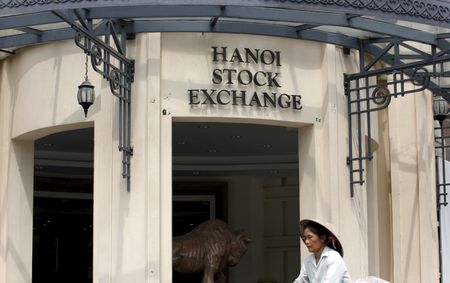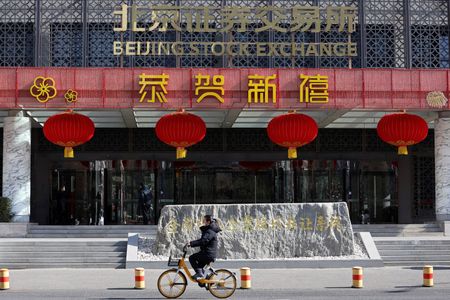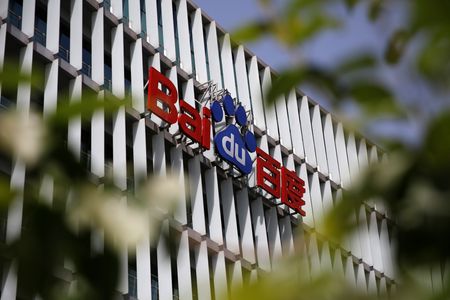BEIJING (Reuters) -China’s largest chipmaker SMIC said the market for its staple mature-node chips could be in a state of oversupply in the second half of 2025, tempering optimism about recovery from a post-pandemic slump.
Semiconductor Manufacturing International Corp focuses on established chips for consumer electronics and home appliances which enjoyed a demand surge during stay-at-home policies of the COVID-19 pandemic, but which suffered as consumer replacement demand tailed off with people returning to offices.
Advanced chips such as those found in Huawei Technology’s smartphones represent only a marginal portion of revenue. SMIC has never confirmed it produces Huawei chips.
“We face two major concerns for the second half of 2025. First, we expect order volume to decline as demand has been pulled forward to the first half,” Co-CEO Zhao Haijun told analysts on Wednesday following the release of fourth-quarter earnings.
Secondly, new production capacity across the industry will likely trigger intensified price competition as manufacturers compete for orders, Zhao said.
SMIC reported October-December revenue of $2.2 billion, up 31.5% on year and in line with market expectations of $2.18 billion, LSEG data showed.
It attributed growth to consumer stimulus measures in its home market boosting sales of electronic products such as televisions and smartphones that use its chips.
The chipmaker said it also benefited from customers’ increased localisation, as manufacturers shifted to domestic production due in part to geopolitical tension.
Its shares in Hong Kong rose by 3.86% in Wednesday morning trade.
U.S. export controls restricting access to advanced chipmaking technology has seen Chinese chip firms including SMIC focusing on the mature-node segment, gaining market share from established players such as Taiwan’s Powerchip.
SMIC has ramped up investment to expand production capacity and strengthen China’s domestic semiconductor capability.
Its capital expenditure surged from $4.5 billion in 2021 to $7.3 billion in 2023, and it maintained that level with $7.33 billion in 2024, its financial results showed. Spending will be around $7.5 billion in 2025, Co-CEO Zhao told analysts.
Gross profit margin, however, has since shrunk to around 20% in 2023 from more than 30% in the two years prior.
It improved to 22.6% in October-December versus 16.4% in the year-earlier period.
Zhao forecast profitability will remain under pressure in 2025, with depreciation costs rising by 20% due to capital expenditure.
Profit attributable to owners reached $107.6 million in October-December versus analysts’ estimate of $193.45 million, LSEG data showed.
(Reporting by Liam Mo and Brenda Goh; Editing by Louise Heavens and Christopher Cushing)










